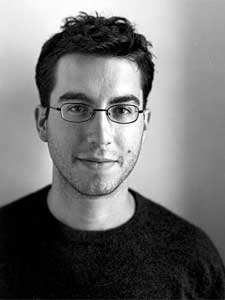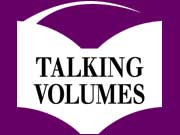 |
| Jonathan Safran Foer's new book, "Extremely Loud and Incredibly Close," has drawn intense reaction from critics -- some love it, and some hate it. (Photo by Grant Delin, courtesy Houghton Mifflin) |
St. Paul, Minn. — On the very first page of Jonathan Safran Foer's new novel -- even before you get to the lovely dedication to his wife and the list of his other work -- is a picture. It's a photograph of an old-fashioned keyhole with an ornate glass doorknob above it, the kind you might still find in a swanky New York apartment building.
That keyhole is a signal that you're slipping into the precocious, magical, heartbreaking world of Foer's narrator, 9-year-old Oskar Schell. Schell is a boy in search of the lock that fits the key that he found among his late father's possessions.
But that keyhole is also symbolic of the reason critics have declared "Extremely Loud and Incredibly Close" by turns innovative and gimmicky, elegant and cloying, a triumph and a disappointment.
Crack this book open in the middle and you might find a page with the word "purple" written on it -- and nothing else. On another page is a blurred, terrible image of a man falling from the World Trade Center tower on 9/11.
The book is studded, in fact, with photographs, pages full of red ink, smeared typography, and at the end, yet more pictures of the falling man.
Novelist and critic Steve Almond says when he saw those devices he wondered what a writer of the caliber of Foer was doing.
"I didn't need all the typography stuff and all the photographs. It just kept me from the story, and ultimately they started to seem invasive," says Almond. "I guess there are some people who find that brilliant, innovative and fascinating. I couldn't make heads or tails of it. When it's a story about a kid who loses his father in that kind of a tragedy, and a guy that's clearly as smart and deeply feeling as Safran Foer is, I want him to stick with the the crucial emotional dynamic here."
But Gabe Hudson, an author, reviewer, and professor at Princeton, says Foer is reaching back for techniques from the beginning of fiction to move his readers.
|
It's like a movie where some people loved it and some people hated it. I can't think of another recent book in which there have been so many people on either side who have strong feelings about it.
- Critic Steve Almond
|
"I'm typically pretty empathetic to a whole bunch of different viewpoints," says Hudson. "My argument would be that the way the straightforward linear stuff resonates in the reader would not resonate to such a degree, if it were not juxtaposed against some of the formal play."
The novel opens as Oskar, still grieving for his father who died in the terrorist attacks on 9/11, discovers a mysterious key hidden in a vase in his father's closet.
That sends him on a citywide odyssey for the right lock, during which he befriends an elderly war correspondent, a limo driver, and the man who rents a room from his grandmother but never speaks.
In the meantime he's dashing off notes to his heroes, like renowned scientist Stephen Hawking. Hawking eventually writes back to Oskar, confiding that he wished he was a poet so that he might write of the mysteries of the universe.
Entwined with the present-day narrative are letters that read like diaries, and reveal the story of Oskar's grandparents against a backdrop of the bombing of Dresden, Germany, during World War II.
Foer has said that he tapped his own family history, let his intuition and instincts guide him, and labored over more than 30 drafts, to write a book that has been hailed as "one of the most original novels to come out of the 9/11 terror attacks."
Although the subject is emotional and dramatic, Foer brings us to his central character with what Gabe Hudson believes is a subtle, sophisticated humor that's very effective.
"It's not like he's telling punch lines. The humor is all sort of reflective of a subjective conscious on the page, so that character begins to emerge more and more," says Hudson. "We know more and more about Oskar and what his vulnerabilities are, so based on whatever it is he encounters in the world -- whether it be humiliating or what have you -- we intuit how that would affect Oskar sort of there in the humor."
Steve Almond admires that quality in Foer's writing as well. He says that's precisely why this second novel has had such a fierce, and divergent, reaction from critics.
"There are some people who adore the book, and you can't say to those people, 'You're wrong, your emotions are wrong, your outlook is wrong, you didn't really enjoy this book,'" says Almond. "I guess it's like a movie that would be incredible, where some people loved it and some people hated it. I can't think of another recent book in which there have been so many people on either side of that, who have strong feelings about it."
If some of the negative reviews bother Foer, he has little time to think about it. He's working on three new projects, including a collaboration on an art book. At 28, he's not caught up in his own legacy. Foer told one reporter recently, "In 10 years, people may wonder, Jonathan who?"
Jonathan Safran Foer appears in a Talking Volumes event at the Fitzgerald Theater in St. Paul on Dec. 7, at 7 p.m.





